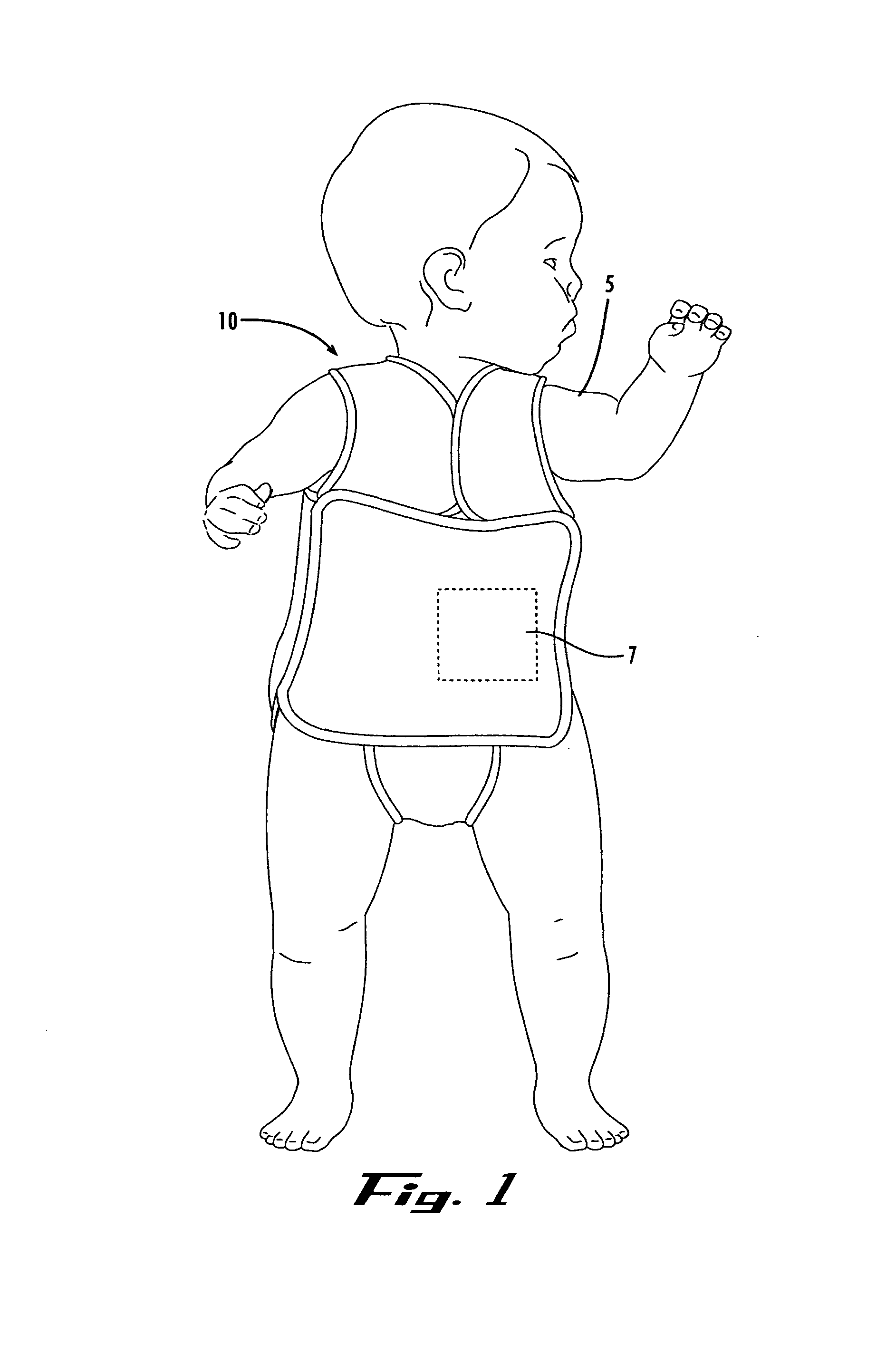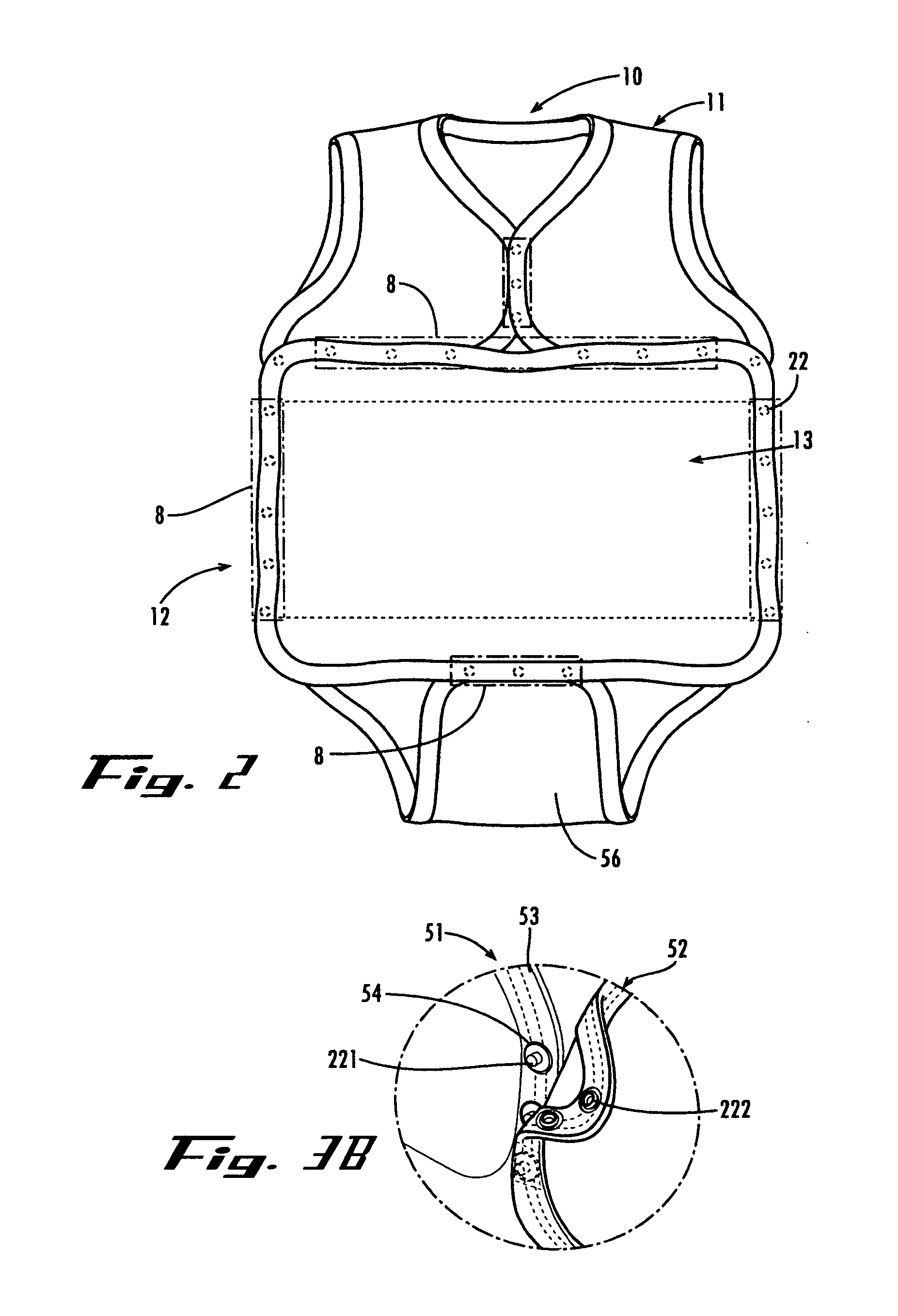Garment for accomodating medical devices
a medical device and clothing technology, applied in the field of clothing, can solve the problems of dystrophy, urea cycle disorders, difficulty in swallowing, and inability to provide oral feeding, etc., and achieve the effects of convenient examination, care and maintenance of the site, and convenient donned by patients
- Summary
- Abstract
- Description
- Claims
- Application Information
AI Technical Summary
Benefits of technology
Problems solved by technology
Method used
Image
Examples
Embodiment Construction
[0039] The drawings referenced herein are provided to assist in the understanding of the invention. It is noted however, that the drawings are not drawn to scale, and that the dimensions of particular elements may vary. Referring to the drawings, where like elements are denoted by like numbers throughout, FIG. 1 shows a patient 5 fitted with a medical device 7, such as a G-tube, and clothed with an embodiment of the invention 10. The exterior appearance of the garment 10 is similar to that of an infant jumper and masks the presence of the medical device. The garment 10 is suitable for infant playwear as well as an infant undergarment. The medical device is secured within the garment 10 so as to prevent infant access. The garment 10 may also be worn by children and adult patients as an undergarment. The garment 10 may be made of a variety of materials; however the applicant has found that cotton works well since it is a natural, breathable fabric that is comfortable to wear as an und...
PUM
 Login to View More
Login to View More Abstract
Description
Claims
Application Information
 Login to View More
Login to View More - R&D
- Intellectual Property
- Life Sciences
- Materials
- Tech Scout
- Unparalleled Data Quality
- Higher Quality Content
- 60% Fewer Hallucinations
Browse by: Latest US Patents, China's latest patents, Technical Efficacy Thesaurus, Application Domain, Technology Topic, Popular Technical Reports.
© 2025 PatSnap. All rights reserved.Legal|Privacy policy|Modern Slavery Act Transparency Statement|Sitemap|About US| Contact US: help@patsnap.com



